
After abandoning a clichéd beach on the Isle of Eigg, Scotland, I walked for an hour across a rocky shoreline to a smaller beach that yielded one of the most staggering shots of the trip. Credit: David Clapp
The modern landscape-photography world is a complicated a air. Although a camera, a few lenses, tripod, filters, map and a great idea seem to be all it takes, the reality can be somewhat different. Desperate for recognition and social acceptance from peers for our efforts, especially online, there is growing pressure to conform with our creativity, rather than take the more difficult path – exploring and pushing our own potential. With a cliché in our sights, are we paying homage, demoting our creativity to trophy-hunter status or are we learning to play a cover song by copying a popular composition?
I remember when I first began to play the guitar, the frustration was immense. Nothing was simple, everything was so complicated and although I felt I had potential welling up inside, I lacked the technique and knowledge. At the end of your first guitar lesson, your teacher does not hand you a chord book and say, ‘Now go home and write me a song’. You learn by exploring and imitating the work of others, connecting with simple and accessible music to inspire, satisfy and more importantly, build your confidence.
Drawing a parallel, photography is a very similar but slightly differing a air. Yet alongside this worship, an inherent difficulty starts to build. For most, the goal that calls us onwards is the pursuit of a sublime state – photographic identity – but this enlightened, self-perpetuating state is very difficult to achieve. Work, family life and those ever-so-demanding children pull us every which way! So when we do finally catch a break, what’s the harm in bagging a cliché or two to keep our creativity on track? The majority of these very tempting opportunities are less than a few hundred metres from the car and look absolutely sensational in the right conditions – after all, they’re clichés for a very good reason.
Using long lenses to compress the long-distance landscape means you have no idea where you are. You can be standing at a cliché and no one will know. Credit: David Clapp
Building identity
As creative landscape photographers seek to define themselves, the importance of building an identity grows significantly. Within their local area, there may be a number of go-to opportunities that yield quality results but these change to ‘backup plan status’ as confidence increases. For most, the attempt to reach a new creative level is at the forefront of their minds. Yet with pressure to produce a constant flow of impressive material to an ever-hungry online audience, the return to a cliché alleviates the anxiety and smooths the journey. It may be all that was achievable, as bad weather, busy work and home life pull the photographic handbrake.
Creative safety is what causes heavy traffic at clichés. A sunrise shoot with guaranteed mist creates a local stampede for Corfe Castle and should you not happen to live near a fabulous area then monetary risk adds to the pressure to perform.
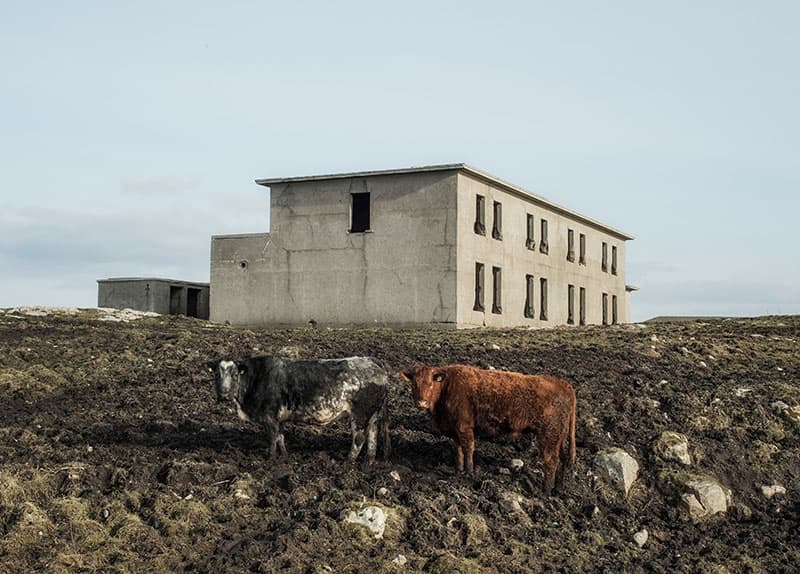
Taken at Ireland’s Fanad Lighthouse while standing on a wall. This ‘smelly’ image was one of my favourites from the trip, the antithesis of the dramatic lighthouse I came to shoot. Credit: David Clapp
Going further a field
When travelling further afield, the risks are not just meteorological, they are also financial. For many photographers, their successes are snatched on an annual family holiday or long weekend away, grabbing photography opportunities whenever they can. For others, the adventure becomes specific – a photography trip with good friends, an experience together for a week, exploring in the safety of company. Then there is the photographic workshop – a great place to experience new and unknown lands, especially when travelling overseas.
Of course, all travel has a financial cost and a ‘return on investment’ is understandable. So being faced with the ultimate disaster – no good photos – forces many photographers to congregate at the honeypots, to make sure any trip is not all for nothing.
Professional photographers are often the worst at this. With every expense being a business cost, the pressure to get saleable imagery switches the composition collecting instincts into overdrive.
Most like to ‘warm up’ with some big-hitting clichés, get a few in the bag before moving on to capture greater creative risks. It’s a way of calming the nerves – a cliché is a keeper. Conversely, wandering around on location with a smartphone full of once-in-a lifetime clichés is not very healthy, yet so many photographers do this. The need could be nothing more than drawing inspiration, but others like myself feel that this obsessive research has a detrimental effect.
This collection process is often belittled as photographic trophy hunting, a basic approach, but let’s think about it – for those without the time or the room to pursue creative goals, those at the beginning of the creative process, this is the best route by far. There’s certainly nothing wrong with playing other people’s songs and having a really good time doing it!
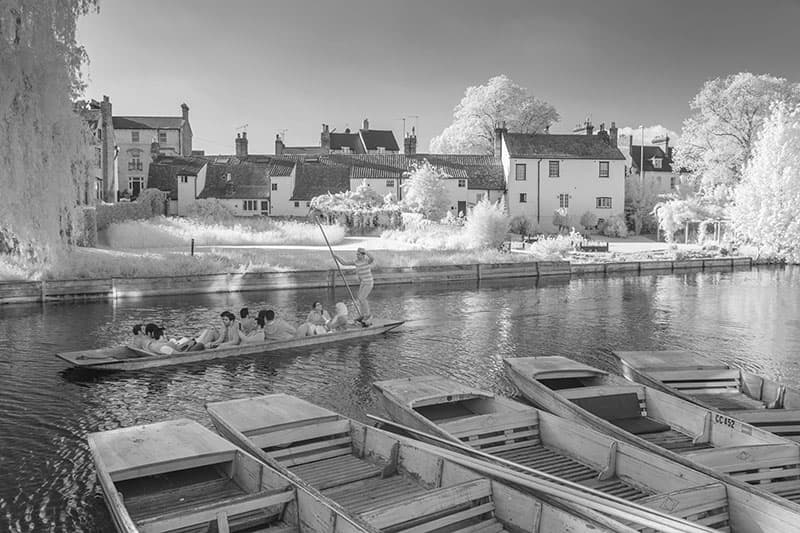
Not your conventional shot of Cambridge, this was taken with an infrared camera further up river. Credit: David Clapp
Side-step the clichés
One way of avoiding clichés in your work is to not visit them at all, but just because you are in a beautiful place, it doesn’t mean you won’t see other things that are far more interesting. Some photographers seem to decode the world around them effortlessly wherever they are. While staying away from clichés is good for the mind, it can also be a terrible struggle. Although it may appear so, you don’t have to walk a miserable and lonely path. What you have to do is think differently and stop approaching photography with the same clichéd mindset – that’s where the clichés are really lurking.
Something as simple as changing the focal length can be all it takes to trigger the mind to see a new and exciting way. Approaching the same subject from a different angle and position can not only stimulate a new idea, but can also be all it takes to generate an entirely different picture. Why not try a completely different time of day? Or how about shooting a well-known location in a different frequency? Personally I use an infrared camera to help me to see things in a completely unique way.
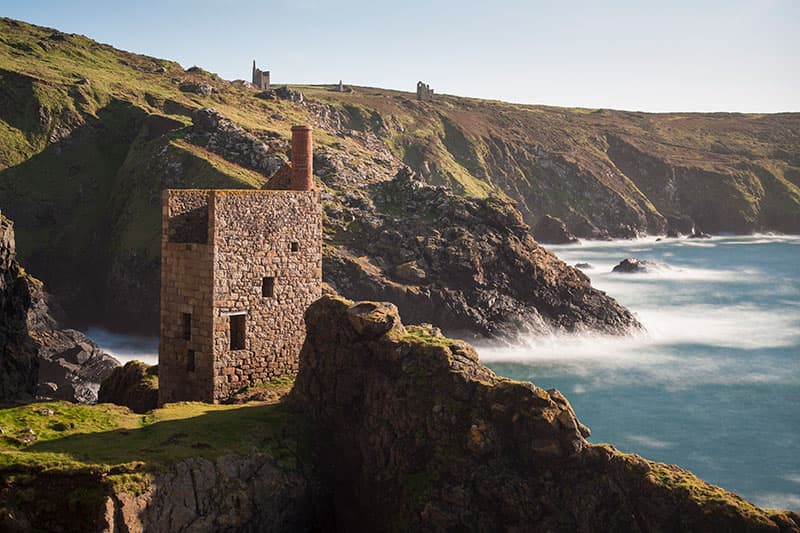
Credit: David Clapp
Why it works
Over the years, I have shot the Crown Mines in Botallack, Cornwall from the classic view, one to where many photographers head. After another round of average results, it suddenly dawned on me that I had never actually approached the mines from behind. The footpath leads to the buildings, but was there anything else to see? After exploring the cliffs with little result, I came down onto the path and found another composition that I had never seen before: a mine facing towards the open sea, with a few buildings visible on the hilltop. All these years I had been photographing a Cornish cliché, but that day I felt empowered having walked away with something that was not only unrecognisable, but my own take on a popular spot.
David’s top tips
Allow yourself to take that honeypot shot, but only once you’ve exhausted all options

Experiment and make your own compositional rules; it’s all about trial and error. Credit: David Clapp
Do your research – then stop
Photographers often do far too much research before a trip begins. This not only empowers, but it also antagonises. Nothing is worse than feeling down because you’re looking at a smartphone full of amazing work, which leads many back to the safety of the cliché. Arrive on location, throw your arms wide, and then get to work.
The last resort
Rather than bag a cliché, remind yourself that you are better than this. If you know where a popular composition is at the location you’re in, only visit the concept when you have creatively exhausted all other options, or you could find absolutely nothing else.
Change your vision
Many pictures are clichés because of popular focal lengths. Many landscape photographers use a magic formula (like a rock in the foreground) and simply repeat the concept again and again rather than experimenting with other far more creative options. Deny yourself the easy option and tackle a cliché in a new direction.
Be prepared to fail
No one likes to feel that they could lose, but ultimately such a feeling will empower you. Spending time feeling nervous about the outcome, instead of comfortably photographing clichés, can often create the very best work. Walking away from a shoot knowing that you tried hard to innovate is a good feeling, whatever the result.
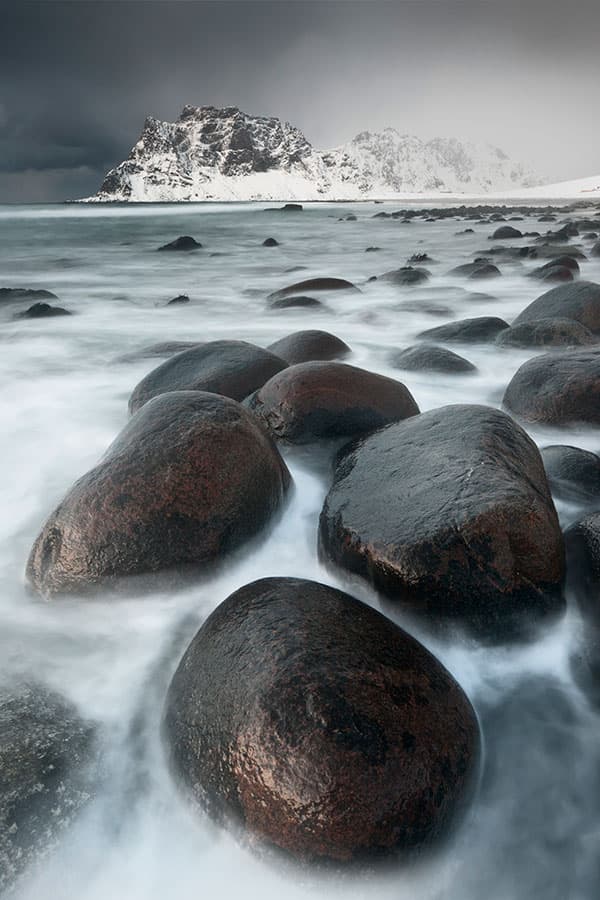
Credit: David Clapp
It’s not good enough
It can work wonders if you set the bar high and restrict your approach. Spend some time on refining the concept of a composition. It will improve your vision and confidence. Trust your instincts to call you onwards to a better picture and enjoy a far better result without a cliché in sight. This Norwegian image (above) took 40 minutes to find, after many compositions were abandoned.
Communicate your vision
Walking the path of an innovator is going to take guts. Do not expect a rapturous response to a fresh perspective even from a known location. Clichés always pull a guaranteed audience, but often their vision is less comfortable with change. Nonetheless, show your strength by communicating your concept.
David’s alternative techniques Namibia – but not as you know it
Think Namibia and everyone envisages orange sand dunes, black trees and blue skies. Yes, Namibia’s minimal composition has elevated it to one of the most popular geographical destinations on the planet. Go there and it’s hard not to revel in its beauty, no matter how derivative your precious images may appear. It’s possible to think well outside the box, with the use of different equipment and a different approach.

Don’t make experimentation become a chore, have fun with it. A little knowledge and creativity can go a long way. Credit: David Clapp
A night shoot in Kolmanskop was the antidote to all those sand-filled rooms and doors. It took my night-photography knowledge to build a fun image of my ‘zombie’ friend Greg lurking in the abandoned hospital with just a few head torches. I regret that I didn’t have a hatchet to give him.

If you’re lucky enough to get in the air and capture a different perspective of a popular location, home in on detail, shapes and patterns. Credit: David Clapp
On a helicopter flight over Deadvlei, I was able to photograph an incredible cracked mud pattern that I have never seen before, despite aerial photography over the dunes being a popular adventure.
Inside Deadvlei itself, a team of equidistantly spaced tourists climbing a nearby dune became the perfect silhouettes, producing one of the strongest images of the trip. Keeping my eye on the party as they ascended, I used a 560mm focal length to isolate them from considerable distance.
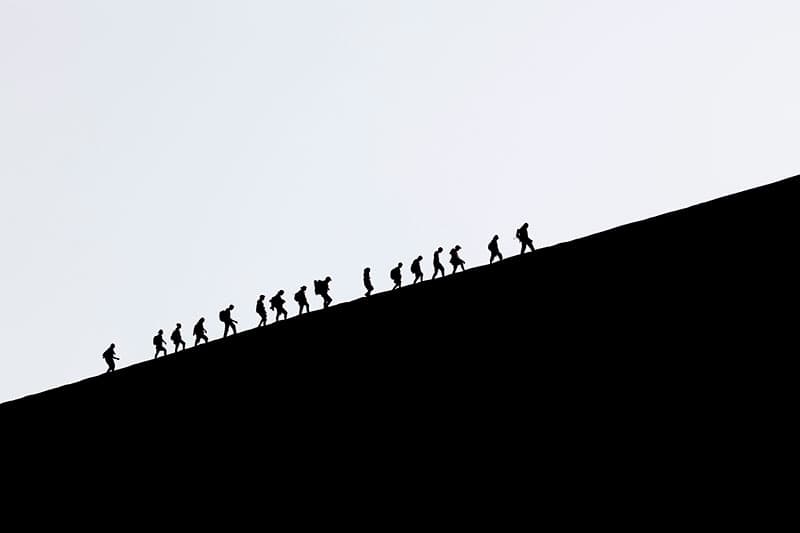
Deprive the scene of colour and think graphically. This mono-silhouette image really packs a punch. Credit: David Clapp







